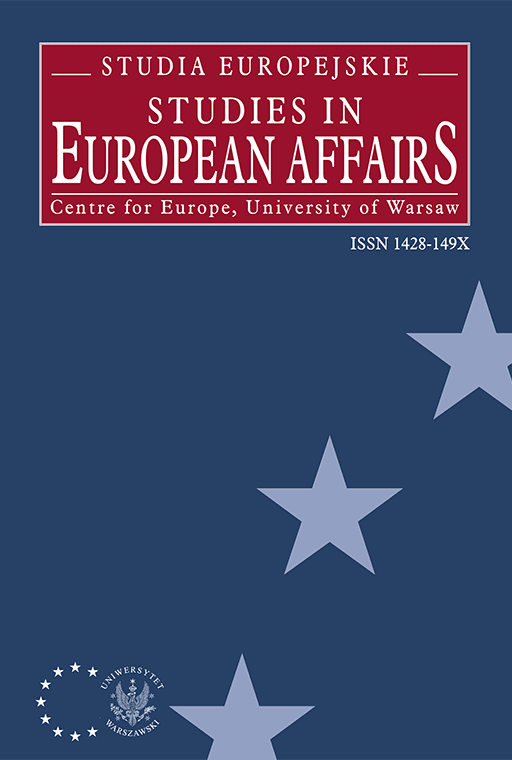
ISSUE: 2/2011
- Volume 58
- Number 2
- 2011
Subscribe NEWSLETTER
Studia Europejskie –
Studies in European Affairs
ISSN: 1428-149X
e-ISSN: 2719-3780
License
Articles published in the journal are under a Creative Commons Attribution – Non Commercial – No Derivatives 4.0 International License
Dwa modele polityki społecznej: europejski-socjaldemokratyczny i amerykański-liberalny. Na przykładzie wybranych obszarów polityki społecznej Stanów Zjednoczonych i Szwecji
Two social policy models: Euro-social and US-liberal Analysis based on chosen fields of social policy in the USA and Sweden
Abstract
The article analyses the differences between theoretical concepts of social policy models: US-liberal and the Euro-social, according to the classification of Gustav Esping-Andersen. The Liberal social policy model assumes reduced state interference in social life. The Social model offers the citizens a broad range of social security. Contradictory solutions within
both models are presented on the social policy of the United States and Sweden. Selected areas analysed include health care system, social aid programmes and provisions of the labour market. The fundamental institutions of social policy in the United States are private market and family. By contrast, in Sweden it is the state that acts as most important social policy institution and provides extensive care from cradle to grave. Anyway, both the United States and Sweden are withdrawing from the classic models. In the first case it means increasing state involvement in the conduct of social policy. The second one is associated with increased private sector participation in providing social services and greater participation of the citizens.
Language: Polish
Pages: 69-92
How to Cite:
Harvard
Maciągowski, F. (2011) "Dwa modele polityki społecznej: europejski-socjaldemokratyczny i amerykański-liberalny. Na przykładzie wybranych obszarów polityki społecznej Stanów Zjednoczonych i Szwecji". Studia Europejskie – Studies in European Affairs, 2/2011, pp. 69-92.